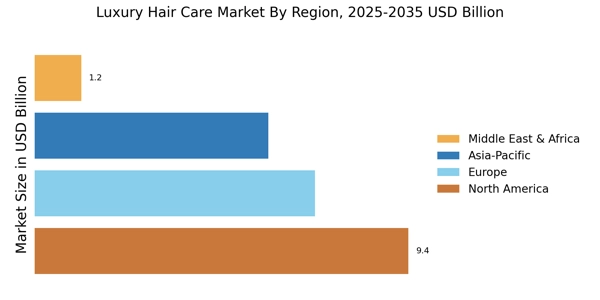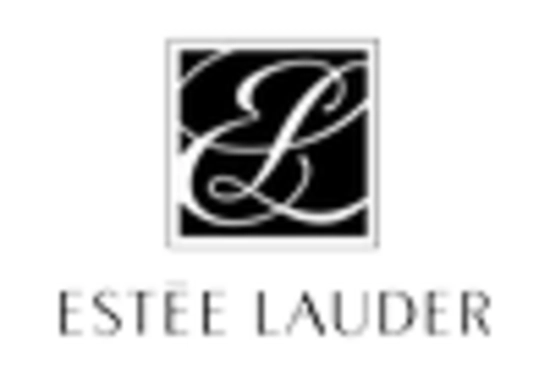Rising Disposable Incomes
The Luxury Hair Care Market appears to be significantly influenced by the rising disposable incomes of consumers. As individuals experience an increase in their financial capacity, they tend to allocate more funds towards premium hair care products. This trend is particularly evident in emerging markets, where a burgeoning middle class is increasingly seeking high-quality hair care solutions. According to recent data, the luxury hair care segment has witnessed a growth rate of approximately 5% annually, driven by consumers' willingness to invest in products that promise superior results. This shift in spending habits indicates a potential for sustained growth within the Luxury Hair Care Market, as more consumers prioritize quality over quantity in their hair care routines.
Growing Awareness of Hair Health
There is a notable increase in consumer awareness regarding hair health, which is shaping the Luxury Hair Care Market. As individuals become more informed about the impact of various ingredients on hair quality, they are more inclined to seek out luxury products that offer nourishing and restorative benefits. This trend is supported by a rise in educational content available through various media channels, which emphasizes the importance of using high-quality hair care products. Market data suggests that the demand for products containing natural and organic ingredients has surged, with a reported increase of 30% in sales for brands that prioritize clean formulations. This growing awareness is likely to continue driving the Luxury Hair Care Market as consumers increasingly seek products that align with their health-conscious values.
Influence of Celebrity Endorsements
The Luxury Hair Care Market is also being propelled by the influence of celebrity endorsements and collaborations. High-profile figures in the entertainment and fashion industries often serve as brand ambassadors for luxury hair care products, which can significantly enhance brand visibility and desirability. This phenomenon is particularly pronounced on social media platforms, where celebrities showcase their hair care routines and recommend specific products to their followers. Data indicates that brands that engage in celebrity partnerships experience a 20% increase in sales on average, highlighting the effectiveness of this marketing strategy. As consumers aspire to emulate the looks of their favorite celebrities, the Luxury Hair Care Market is likely to benefit from this trend, as more individuals seek to invest in premium products endorsed by trusted figures.
Shift Towards Eco-Friendly Packaging
The Luxury Hair Care Market is experiencing a shift towards eco-friendly packaging solutions, reflecting a broader trend in consumer preferences for sustainability. As environmental concerns become more prominent, consumers are increasingly seeking products that not only deliver quality but also demonstrate a commitment to reducing environmental impact. Brands that adopt sustainable packaging practices, such as biodegradable materials and refillable containers, are likely to attract environmentally conscious consumers. Recent data suggests that products with eco-friendly packaging have seen a 25% increase in sales, indicating a strong market demand for sustainability. This shift towards eco-friendly practices is expected to continue influencing the Luxury Hair Care Market, as brands recognize the importance of aligning with consumer values.
Technological Advancements in Product Formulation
Technological advancements in product formulation are playing a crucial role in the evolution of the Luxury Hair Care Market. Innovations in ingredient sourcing and product development have led to the creation of highly effective formulations that cater to diverse hair types and concerns. For instance, the introduction of advanced delivery systems allows for better absorption of active ingredients, resulting in enhanced product efficacy. Industry expert's indicates that brands utilizing cutting-edge technology in their formulations have seen a 15% increase in consumer loyalty, as customers are drawn to products that deliver tangible results. This focus on innovation is likely to continue shaping the Luxury Hair Care Market, as brands strive to meet the growing demand for high-performance hair care solutions.


















Leave a Comment